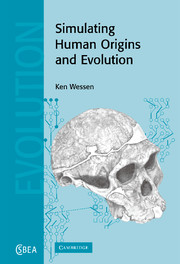2 - Overview
Published online by Cambridge University Press: 14 August 2009
Summary
The concept of a ‘species’, despite its fundamental nature, has proven surprisingly difficult to pin down, primarily because an ideal species concept seemingly must satisfy a number of conflicting criteria. Hull (1997) gives a review of several possibilities, evaluating them with respect to generality, applicability and theoretical significance, but finds that no single concept is clearly superior to the others. Particular difficulties for any species concept arise because of polymorphism, clinal variation (e.g. gradual change across a large area leading to the situation where interbreeding between local subspecies can occur, but is not biologically possible between subspecies more geographically separated), and hybrid zones (where gene flow is possible, but is limited by geographic constraints).
Although there are several proposed definitions, the following two examples are broadly representative of the two most widely used general approaches.
Biological species concept: a group of organisms is a species if it consists of actually or potentially interbreeding individuals, and is reproductively isolated from other such groups (Mayr, 1969).
Phylogenetic species concept: a group of organisms is a species if it is the least inclusive monophyletic group definable by at least one autapomorphy (i.e. a derived character state exclusive to a particular taxon) (Mishler and Donoghue, 1982). Closely related to this is the diagnostic species concept (Cracraft, 1983), where the classification is based on character states that are fixed and not necessarily autapomorphic.
- Type
- Chapter
- Information
- Simulating Human Origins and Evolution , pp. 17 - 25Publisher: Cambridge University PressPrint publication year: 2005

